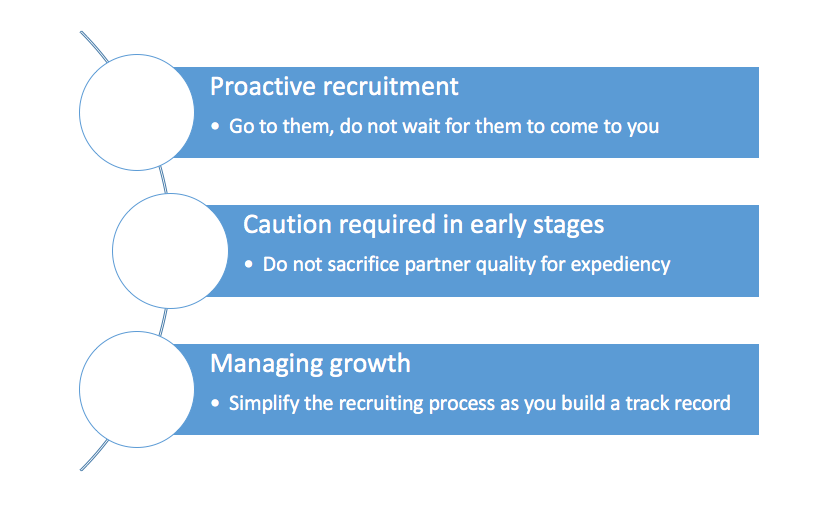Channel Partner Recruitment from Early Stage to Late Stage
This is the fifth video in the “Building Successful Partner Channels” series of five videos that TBK Consult has made for the Microsoft Smart Partner Marketing portal.
Using a channel of independent companies to find, win, make, keep and grow happy customers on our behalf has a long tradition in the software industry. For some software companies the indirect channel has been a major contributor to global success, but for most software companies making it work remains a constant struggle.
I am Hans Peter Bech and in this video, I will discuss the process for channel partner recruitment from early stage to late stage.
The process required for recruiting channel partners is very similar to the process for recruiting to key positions in our company. First, we develop an ideal profile of what we want and then we go looking for candidates. With a long list of potential candidates, we undertake interviews to shortlist the most appropriate, which we then invite to the final selection event. By the end of the process, we negotiate the terms and conditions and sign the agreement.
The challenges associated with early stage channel partner recruitment are also identical to the challenges associated with finding talent for our company. Established brands get a solid stream of unsolicited applications while unknown brand names won’t get any. Established brands get tons of applications when advertising, unknown brand names get very few applications, and most often none at all.
If we are in the early mode channel development stage, chances are that we have no other option than to get out there and “headhunt” our new channel partners.
The biggest challenge with headhunting is not finding the potential candidates, but convincing them to become active candidates for the positions we have open. This explains why we have to go through the process of defining partner value propositions, developing partner programs, and identifying the ideal partner profile before we are ready to embark on the channel partner recruitment endeavor. Spelling out the value for the potential partner is much more important when we have no solid track record to show off.
So unless potential channel partners are knocking on our door, we must identify them, initiate the contact and start the process of convincing them to invest in a business relationship with us.
Initially, we don’t want channel partners that are poor performers and we don’t want partners that may hurt our reputation. So even though we are desperate to get new partners on board we must be very cautious. Invest in a management workshop with each partner reviewing the business model, the partner program, the investments required, and the long-term opportunities offered. When both parties agree on a joint action plan then we can sign the Business Partner Agreement.
 As we move into the growth mode, we can change our objectives and simplify the recruitment process considerably. We will still maintain and most likely further diversify the threshold criteria for becoming a channel partner, but as long as newcomers meet these criteria we will sign them up without the elaborate process of interviews, assessment centers, and executive workshops.
As we move into the growth mode, we can change our objectives and simplify the recruitment process considerably. We will still maintain and most likely further diversify the threshold criteria for becoming a channel partner, but as long as newcomers meet these criteria we will sign them up without the elaborate process of interviews, assessment centers, and executive workshops.
Time will then show which of the new channel partners have growth potential and we can then allocate more resources to support them. As we increase our market penetration capacity and our market share the stream of unsolicited inbound inquiries from potential channel partners will also increase and we can refocus our outbound recruitment efforts on filling out those areas in the market where we still have too little coverage.









